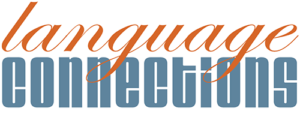Today’s Russian Clinical Trial Environment
International Journal of Clinical Practice 2010
By Karen Politis Virk, M.S.
Due to the escalating costs of bringing a drug to market, many pharmaceutical an d biotech companies are outsourcing clinical research to emerging regions. In particular, Russian clinical trials are booming. Over the past five years there has been exponential growth of Russian clinical trials. The number of Russian trials reportedly doubled between 2000 and 2006, while the number of patients participating in global clinical trials in Russia more than tripled during the same time period (1).
d biotech companies are outsourcing clinical research to emerging regions. In particular, Russian clinical trials are booming. Over the past five years there has been exponential growth of Russian clinical trials. The number of Russian trials reportedly doubled between 2000 and 2006, while the number of patients participating in global clinical trials in Russia more than tripled during the same time period (1).
Despite the recent economic downturn, outsourcing trends in clinical research continue in Russia. In 2008, the number of Russian clinical trials increased by approximately 9% relative to 2007 (2). One reason for this is that the government has taken significant steps to bring about healthcare reforms and provided incentives for Russian companies to development innovative drugs. Foreign companies are also increasingly considering Russia as a potential new drug market. But one of the most distinguishing factors propelling Russian clinical trials is the country’s solid reputation in conducting quality clinical research.
Continued growth in Russian clinical trials can be largely attributed to a good overall clinical research environment in the country. Russia’s highly successful patient recruitment rates are a result of several factors including the country’s large, primarily treatment-naïve population (over 140 million) and a centralized healthcare system. In addition, Russian clinical trials encompass several therapeutic areas and is facilitated by highly-specialized medical centers set up by the previous political system. Although there is a wide spectrum of diseases undergoing research, the most prominent areas in Russia include oncology, cardiology, respiratory diseases, endocrine diseases, infectious diseases, and diseases of the nervous system. With a growing incidence of diabetes-Russia reportedly has the third highest incidence of diabetes in the world- there is a corresponding increase in the number of clinical studies involving diabetes patients (3).
According to UNICEF 2005 statistics, the majority of Russian clinical trials’ sites are located in major urban areas, such as Moscow and St. Petersburg, where 73% of the total population resides. For the sake of comparison, other dominant emerging regions such as India and China can claim respectively 29% and 41% of their population living in urban areas (4). For the most part, migration rates among Russians are low, allowing for excellent follow-up of clinical trial participants. Russian patient enrollment rates are among the highest, and in large multinational studies tend to be a few months ahead of patient recruitment timelines. Furthermore, depending on the area of study, patients are recruited between two and ten times faster in Russia than in the West (5). The average Russian patient recruitment rate in 2006 exceeded 4.7 patients per site per month. For some therapeutic areas, such as hypertension, the figure is ten times higher than in Western Europe and the United States (6). However, as the number of clinical trials in Russia increases, so do the number of concurrent trials conducted at individual sites.
Moreover, this increase is not accompanied by an increase in the number of investigators at these sites (7). According to one study conducted by
Synergy, in 2007 there were 274 ongoing international multicenter clinical trials in Russia (8). Since most sponsors prefer to work with previously established sites, this may make it increasingly challenging for investigators to adequately monitor multiple trials simultaneously.
Other factors which facilitate clinical research include the abundance of highly-skilled clinical investigators, and significantly reduced clinical research costs–clinical research costs in Russia are up to 50 percent less than in western countries already established in clinical research (5). According to data provided by Parexel, the average cost per patient in CEE and Russia is 28 percent lower than in Western Europe and 47 percent lower than in the UK (9). The reduced cost can be largely attributed to successful recruitment rates and the substantially lower salaries of Russian investigators as compared to their Western European or U.S. colleagues. In addition, these statistics are comparable to those in other dominant emerging regions such as India and China.
In addition, changes in Russia’s regulatory environment have also facilitated the growth of clinical research. Currently regulatory and ethics approval prior to initiating trials usually takes about 3 months. Regulatory approval must first be obtained from the Ministry of Health, followed by approval from the National Ethics Committee (NEC). In some cases, local EC approval must also be obtained. However, submission of a clinical protocol to both authorities can be done simultaneously. Despite the fact that regulatory approval processes have been streamlined and may still be shorter than other dominant emerging countries, such as China, issues such as bureaucracy and corruption remain (10). Many local regulations in Russia differ from accepted international standards (in contrast to CEE countries that have joined the EU). As a result, GCP standards, although officially adopted, must be carefully controlled by locally-based monitors and auditors, and sponsors tend to outsource research to well established investigative sites. In addition, logistic and customs problems in Russia are extremely time consuming and require a large amount of resources. Finally, corruption is a general problem, and sponsors must refer to local CROs to guide them in dealing with local regulatory authorities. On the other hand, healthcare reforms and the adoption of a Russian version of ICH-GCP guidelines have led to more Russian clinical trials. Thus, despite the challenges, Russia is a desirable emerging market for companies outsourcing clinical research.
Language and Cultural Barriers in Russian Clinical Trials:
Overcoming language and cultural barriers continues to be a major issue for non-Russian biopharmaceutical companies. Over 81% of Russians speak Russian as their first and only language (11). For the most part, those who speak another minority language are also proficient Russian speakers. Therefore, all regulatory documentation (including informed consent forms, patient diaries, and other relevant patient information) must be provided in Russian, with translations back into other languages for regulatory approval outside of Russia. While there are still challenges in culturally adapting patient information, a single translational requirement somewhat simplifies the approval process, compared to other countries with multiple language requirements.
In addition to language, cultural differences which affect clinical research should be taken into account. Although the majority of the Russian population is Slavic in origin (85%), the Russian Federation is composed of approximately 100 distinct ethnic minorities (12). The process of urbanization, ongoing since the 1930s, reportedly reached 73 % in 1995 (13). Rural areas have continued to lose significant portions of their population since then. As a result, there is ethnic diversity among urban populations. As most clinical trials are conducted in Russia’s two major cities, differences among residing ethnic groups must be taken into account during the patient recruitment process. These differences can also be considered a positive in terms of genetic diversity, which has become a growing requirement in clinical research.
There are also general differences between Western and Russian cultures that foreign sponsors should be aware of. For example, the labeling of medical supplies, including investigational drug labels, may be considered as advertising in Russia due to cultural preconceptions. Sponsors must also be aware of differences in the patient-physician relationship between Russia and Western countries such as the United States. In Russia patients hold their physicians in high regard and, as a result, they often accept their physician’s recommendation to participate in clinical trials without question. This greatly facilitates patient enrollment, compliance, and retention in Russian clinical trials, particularly in contrast to rates reported in the United States. However, such differences in cultural attitudes may also create an ethical dilemma regarding the informed consent process. Firstly, because patients may not question their physician’s recommendations, they may not have the opportunity to discuss other treatment options. In addition, terminally ill patients are not always aware of their disease status, as physicians may commonly inform only family members of a patient’s full diagnosis. This is largely based on the cultural belief that such information can negatively interfere with the outcome of a patient’s treatment (14). These are important cultural aspects which must be addressed, as they may also extend to a physician’s partial disclosure of the risks related to participating in an experimental treatment. In addition, accurate interpretation of clinical trial data is also dependent on an understanding of Russian culture. For example, studies have shown that Russian patients may have a greater tolerance for pain than Western patients (3). Finally, it is important to understand the role of family in medical decision-making in Russian society as most medical decisions are not made by individual patients.
Another important issue arises from recent statistics indicating that traditional patient recruitment methods may no longer be as effective in many emerging countries, including Russian clinical trials. According to a survey conducted by CMR International, a leading global pharmaceutical R&D performance measurement company, Russia has shown a 19% decrease in average enrollment rates over the last five years (7). Therefore, taking into account local cultural perceptions as well as differences among specific patient populations may help to improve the decrease in enrollment rates.
Conclusions About Russian Clinical Trials
Industry trends toward the outsourcing of clinical trials continue to grow, along with increasing economic pressures for pharmaceutical companies to develop, produce, and test drugs for less. The biopharmaceutical industry is finding solutions by growing its strengths in emerging markets. Russian clinical trials clearly have many advantages that make them preferable over dominant emerging regions. These include exceptionally high recruitment and retention rates, adoption of GCP guidelines, the presence of highly skilled clinical investigators, and a reputation for high quality clinical research. On the other hand, there are several issues that must be taken into consideration. Foreign sponsors must closely monitor GCP compliance at investigative sites, they must take care not to overburden clinical investigators with multiple simultaneous trials, and they must be aware of bureaucratic issues and how to deal with them. Finally, as with all international clinical trials, language and cultural barriers must be addressed.
Russia currently is one of the five most prominent emerging countries in international clinical research. However, the success of outsourcing clinical trials to Russia is largely dependent on overcoming language and cultural barriers. For non-Russian sponsors, accurate quality life sciences translation of regulatory clinical trial documents largely determines the successful initiation and completion of a clinical study. For this reason, foreign sponsors opt to collaborate with established local CROs and language service providers. These organizations can employ expert translation services providers in the field of clinical research who have experience working with local regulatory authorities and are native to the Russian language and culture. As discussed in the above section, in addition to overcoming language issues, important cultural differences may affect the process of patient enrollment and the interpretation of data. Thus, by addressing issues of language and culture appropriately, foreign sponsors can fully benefit from the advantages of conducting clinical research in the country.
References
1). Central and Eastern Europe: Outsourcing Trends and Growth: Appendix A:
Healthy Pipeline of Clinical Trials in Russia. CenterWatch http://store.centerwatch.com/pdfs/samples/S07630_c&eEurope.pdf
2). Clinical Trials Market in Russia. Report Buyer. May 2009 http://www.reportbuyer.com/pharma_healthcare/research_r_d/clinical_trials/clinic al_trials_market_russia.html
3). The Healthcare, Pharmaceutical, & Clinical Trial Environment in Russia. Sribd. RM Consulting. 2006. http://www.scribd.com/doc/18937694/Clinical-Trials-Russia
4). CenterWatch Tracks Emerging Market of Clinical Research. Thomson
CenterWatch. 2007. http://www.centerwatch.com/press/pr-2007-04-19.htm
5). Barnes, Kirst. “Chiltern makes latest CRO move into Russia.” Outsourcing Pharma.com, April 22, 2008. http://www.outsourcing-pharma.com/Clinical-Development/Chiltern-makes-latest-CRO-move-into-Russia
6). Synergy Research Group, Clinical Trials Database
7). The Regional Alternative. Samedan Pharmaceutical Publishers. 2009. http://www.samedanltd.com/magazine/11/issue/119/article/2477
8). Stefanov, Igor. “Clinical Trials Come to Russia.” International Clinical Trials. 2007. http://www.synrg-pharm.com/article39.htm
9). Parexel’s Pharmaceutical R&D Statistical Sourcebook, 2007/2008
10). Emerging Markets Series: Report: Benchmarking key countries Brazil, Russia, India, China, and Turkey. Bharat Book Bureau. January 2008. http://www.bharatbook.com/detail.asp?id=71718&rt=Emerging-markets-series-Benchmarking-key-countries-Brazil-Russia-India-China-and-Turkey.html
11). Languages across Europe. Russia. BBC Home. Accessed January 19, 2010 http://www.bbc.co.uk/languages/european_languages/countries/russia.shtml
12). Russia Ethnic Composition. History Russians Abroad.com. Accessed January 19, 2010. http://www.russiansabroad.com/russian_history_115.html
13). The Library of Congress. Country Profile Russia. Demographics. October 2006. http://lcweb2.loc.gov/frd/cs/profiles/Russia.pdf
14). Forrow, Lachlan. 2008. “Cultural differences complicate a terminal cancer diagnosis.” ACP Internist. March issue.
About Language Connections:
Language Connections is one of the top language service companies in the US. Over the last 30 years, we’ve focused on providing the best business translation services, interpreting services, as well as interpreter training and customized language training programs. In addition to top-tier corporate language training, we offer certified corporate interpreters and professional business translation services in 200+ languages. Our network includes linguists with backgrounds in all major industries. They’re ready to meet your needs, whether they’re for technical translation services, legal translation, government translation services, international development translation services, education translation services, life sciences translation, or something else. Reach out to us today for a free quote on our cost-efficient and timely translation services, interpreters, or other linguistic services.
Language Connections Inc.
2001 Beacon Street, Suite 105,
Boston, MA 02135
Phone: +1-617-731-3510
Email: service@languageconnections.com







